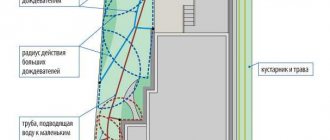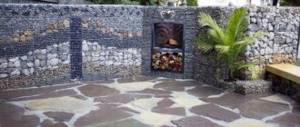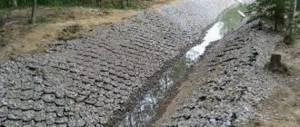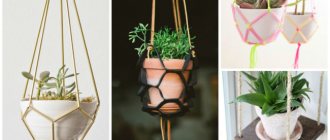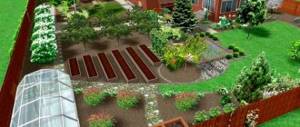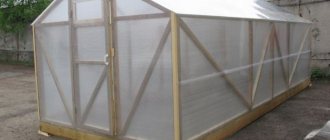Advantages and disadvantages of using supports
- The collected berries are always clean because they have no contact with the ground.
- For the same reason, it does not rot and ripens more evenly.
- The released whiskers do not grow and do not require constant monitoring of rooting.
- There is no need for weeding - weeds do not grow without light.
- Easy to harvest.
- Ants and mole crickets do not settle in the sown area.
- The soil does not dry out and is not subject to erosion due to the scorching sun and winds.
- Planting does not require loosening, since a soil crust does not form.
- The created microclimate and loose soil attract earthworms, which further contribute to soil aeration.
- The bushes grow stronger due to the active growth of roots in favorable conditions.
- The harvest will ripen 2 weeks earlier and its quantity will increase.
- Ripe berries do not spoil as quickly as on the ground, and can lie on the surface of the mulch for up to 14 days.
- The covering left for the winter protects the root system from freezing.
- The crop does not suffer from temperature changes as much as uncovered plantings.
- Compared to organic mulch, there is no risk of introducing pathogenic microorganisms, fungal spores and harmful insect larvae.
The use of holders, stands, and mats for strawberries brings tangible benefits. All options prevent rotting of berries and protect them from slugs and beetles. On a small ridge, installing supports is easy and inexpensive. For a large plantation this requires a lot of time and certain financial costs.
Dimensions of classic strawberry beds
To ensure a high yield, you need to decide on the size of the beds. With the traditional planting method, the crop is placed in a carpet method, in rows or in nests. This technology is also optimal for organizing tall plantations. The carpet method is appropriate for summer residents who rarely come to their site. In this case, the crop grows and a microclimate is formed, and a layer of mulch is formed on the surface of the earth. Thanks to this, the strawberries will not need frequent watering or feeding, but as the rosettes increase, they will become smaller.
To get large fruits, agronomists recommend adhering to certain parameters for planting berries. Be sure to take into account the following nuances:
- The optimal width of the ridge is up to 80 cm. This is quite enough to place two parallel rows at a distance of 40 cm from each other. If you allocate too wide a place, you may have difficulties with watering, weeding and harvesting.
- The appropriate landing direction is from east to west. Thanks to this, you can prevent young bushes from shading each other.
- The height of the structure for garden strawberries depends on the type of structure. Low options with sides of 20-40 cm are easy to manufacture. Tall models, the walls of which are up to 90 cm, have some advantages: ease of maintenance, placement of covering material and picking berries.
- The suitable distance between crops is 40 cm.
- The optimal width of the furrows to which the planting site should be cut is 30-40 cm, and the depth is from 20 cm.
- Remember that you cannot plant berry bushes too close to each other. Saving space will negatively affect plant growth, provoke the rapid spread of diseases and complicate weeding.
Solid carpet
To plant as many fragrant berry bushes as possible on your site, pay attention to a method called “solid carpet”. In this case, you will not need to make rows, which will save your time when arranging the land. The most important thing is the need to maintain a certain distance between crops, which should be about 25 cm.
Two line tape
The peculiarity of this method is that you will need to separate every two lines (rows) from each other. Compared to the previous option, you will not be able to plant many bushes in the same area, but you will get larger berries. Main parameters:
- the distance between two ridges is from 60 to 70 cm;
- each ridge consists of a pair of rows located at a distance of 30-40 cm from each other;
- The crops in each row are 25 cm apart from each other.
- Symptoms and treatment of pyelonephritis in women
- How to quickly increase hemoglobin in the blood
- Celiac disease - what is it in children and adults. Symptoms and diagnosis, medications and nutrition for celiac disease
In three lines
This option is similar to the previous one, but each strawberry bed includes not two, but three lines. When choosing this scheme, adhere to the following parameters:
- each bed, consisting of three rows, should be removed from the other at a distance of 60-70 cm;
- the standard distance between lines is within 25-30 cm;
- The optimal distance between crops in rows is 25-30 cm.
In five lines
An interesting scheme for growing garden strawberries, which is perfect for denser planting. Similar to other types of “ribbons”, but differs in the minimum distance between bushes:
- each landing site consists of five lines;
- the beds are equidistant from each other by 60 cm;
- the distance between the lines is 15 cm;
- The crops in the rows are separated by a distance of 15 cm.
Selecting a location
Before organizing the beds, it is important to choose a good place for growing strawberries or wild strawberries. These crops grow poorly in areas of high humidity. If your land plot has very shallow groundwater, then the strawberry beds will have to be made high. Otherwise, water will constantly stagnate in the soil - and this will be the main answer to the question of why strawberries rot in the garden beds.
| After what crops should strawberries be planted? |
| Cereals (rye, corn), legumes (beans, peas, lentils). |
| Potatoes, cucumbers, tomatoes, all types of cabbage, peppers, pumpkin, zucchini, melon, watermelon, squash, eggplant |
The advantage of agrofibre over polyethylene
First of all, you will have to decide whether it will be polyethylene or agrofibre, which is offered in a wide range by specialized stores. It is advisable to use this particular covering material for the following reasons.
- Lets water through. Watering can be done directly through it. In the case of polyethylene, a different irrigation system will have to be provided.
- You can apply aqueous fertilizer solutions directly through the canvas.
- The earth “breathes” because air passes freely through the pores between the fibers.
- The risk of developing fungal pathologies and the formation of rot is reduced, which is especially fraught with the use of plastic film.
- More durable. The “life” of agrofibre is usually determined at 3 years, which coincides with the full development cycle of a strawberry bush, after which it requires replanting. The film will have to be completely changed every year.
Additional recommendations
Having decided on the location, you need to prepare a bed for strawberries. The culture is very sensitive to the quality of the substrate. The ideal soil for strawberries is turf soil that has been generously fertilized with humus. Medium loamy soil is also a good alternative. It is non-acidic, with a rich supply of minerals and organic matter.
Please note that peat always gives an acidic reaction, but its texture is ideal for loosening the soil. Your job is to make the peat neutral before adding it to the ground.
For 1 bucket of peat you need to add 1 glass of wood ash, which will extinguish the acidity. This procedure should be done exclusively in the fall, and not in the spring. Fresh ash contains a large amount of calcium, and it slows down the growth of strawberry and wild strawberry seedlings. Therefore, the peat must overwinter - and only then can it be added to the strawberry beds.
Strawberries can be grown not only on the ground. A bed made of PVC pipe will look original. You can place it anywhere in the garden: hang it on a fence, place it on vertical supports.
You will need 2 pipes:
- one of small diameter (40 mm) for watering, you need to drill holes in it, you can take a garden hose;
- the second is of large diameter (main).
In the main pipe, holes with a diameter of 10-15 cm need to be cut every 15 cm. After this, proceed to filling:
- pour small pebbles, this will be drainage;
- insert a hose with holes for irrigation, pre-wrap it with covering material, the holes will not become clogged with soil;
- add nutrient substrate.
Strawberry bushes are planted in the holes of the pipe. The berries in such a tube bed are always clean; they do not need additional support. They are easy to care for. Liquid fertilizers can be added to water for irrigation.
There are many options for original beds for strawberries. They build beds from used car tires. They are made from plastic bottles. The vertical bed-barrel for strawberries is very popular. During flowering and fruiting, wooden pyramid ridges become a decoration of the garden.
Choosing the right soil for the garden bed
Regardless of the type of berry, you need to choose the right place and soil.
If the soil on the site is poor, it is better to make a high bed with bulk soil.
Experienced gardeners adhere to the following rules:
- Strawberries are planted only on level ground, avoiding lowlands and ravines where a lot of moisture collects;
- berry bushes must receive enough light, so they are planted away from the fence, tall trees and shrubs;
- choose the soil for planting, where previously the predecessors were carrots, lettuce, parsley (any greens), beets, onions, garlic, and grain crops;
- choose sandy or chernozem soil for planting;
- if the soil is clayey, subclayey, then it must be fertilized with limestone or dolomite flour;
- optimal soil acidity – from 5 to 7 pH ;
- Be sure to fertilize the soil.
It is worth noting that experienced summer residents do not recommend planting strawberries in places where potatoes, cabbage, tomatoes, and cucumbers , since they depress the soil and it must be properly restored.
Preparing the soil for planting strawberries?
In order for the soil to have all the necessary microelements for the normal growth of the strawberry root system, it must be properly fertilized.
So that the soil has time to compact, the strawberry bed is dug up a month before planting at the end of August or in late autumn during spring planting.
First of all, various types of manure, peat, compost, humus . To ensure optimal acidity and other soil indicators, use:
- diammophos;
- ammophos;
- nitroammophoska;
- nitrophos.
Organic matter is scattered over the entire plot of land where the berries will be planted, carefully digging up the soil.
How to choose a site for planting
For planting, a flat, non-sloping piece of land is selected. It is better to make the beds high to prevent stagnation of groundwater, melt and rainwater. Further actions are performed in the following order.
- Dig up the ground with a shovel full, carefully selecting the weeds and all their roots.
- Add humus, mineral fertilizers, and wood ash.
- Moisten the soil to make it easier to form the beds and make high and fairly wide (about 80cm) mounds for them in rows, leaving the necessary row spacing.
- If polyethylene is used, at this stage it is necessary to provide a drip irrigation system, for which hoses with holes evenly made in it on both sides are laid under the film.
- Lay the covering sheet. It should be taken into account that it must be wide enough so that it can be securely fastened on both sides from the wind, otherwise you can suffer from it later. At the joints, agrofibre is overlapped by 20 cm, the joints are sprinkled with earth or pressed with heavy hand objects.
- To secure the canvas, grooves are deepened along the entire perimeter. There can be several methods of fastening. The most convenient way is with the help of metal rods, onto which fabric is wrapped on both sides, after which the rods with the twisted fiber are placed in recesses and sprinkled with earth. In the absence of them, you can use boards, heavy stones or just earth.
Film and black non-woven material are used for drip irrigation systems. These are multifunctional options. On the one hand, they prevent moisture evaporation and save water. On the other hand, they protect berries and bushes from dirt, slugs, and other insects.
Working with these materials is easy. They are durable. Can last for several years. Covering material (film) should be laid in the spring. First, draw a diagram of the location of the bushes on the canvas. Then make cross-shaped notches. Place the film on the bed and pull the bushes out through the notches.
We invite you to familiarize yourself with the Characteristics and description of the barley variety Vakula
Fine mesh is used similarly to film. You also need to make holes in it for the bushes. If the cells are large, this is not necessary. While the stems are small, you can simply tuck them into the hole. When the strawberry bushes grow, the net needs to be raised above the ground, tying it to pegs.
Wire can be used in several ways:
- stick pegs along the row of strawberries and stretch the wire between them;
- cut into pieces, make holders in the shape of the letter “M”, install several pieces at each bush, put flower stalks on them.
Finished plastic structures look aesthetically pleasing. Place holders under each bush. They come in different sizes. Easy to assemble. They have legs. The bushes are not damaged, since the product has latches. The holder is first placed under the bush, then given the desired shape and secured with latches.
When growing strawberries in open ground, it is necessary to take into account that they do not bear fruit well in the shade. Strawberry beds should be planted in sunny south-eastern areas of the garden. The place for planting strawberries should be well protected from the wind. The beds can be placed between blackcurrants and gooseberries.
A bountiful harvest can be obtained by planting strawberries in light soil that allows water and air to pass through well and has a low acidity level (5-6 pH). Garden strawberries grow well both on a sandy substrate enriched with humus and in humus or turf soil. Waterlogged, saline and calcareous soils are not suitable for strawberries.
You can grow this crop on sandy-loamy soil, but in such dense soil it is necessary to add raising agents. For these purposes, rotted sawdust mixed with ash is used. Soaking 10 kg of sawdust for 2 hours in the following solution will help speed up the process of softening wood:
- 2 liters of water;
- 2 tbsp. urea.
Peat absorbs and retains moisture well, but its use as a leavening agent is not recommended because it increases the acidity of the soil. To compensate, ash or dolomite flour is added to the peat. Adding loosening agents containing ash to the soil is only permissible in the autumn, because it contains a lot of calcium. This element can negatively affect the growth and development of plants. To loosen the soil in spring, coarse river sand-perlite is used.
When growing strawberries for more than three years in the same area, the berries will become small and the plant will develop worse. This is due to soil depletion. To restore its composition, it is recommended to practice the order of growing garden crops.
In order for the substrate to have the most suitable composition for planting strawberries, you need to select those areas where legumes or cereals grew. The best predecessors of strawberries are the following plants: carrots, corn, radishes, parsley, dill or celery.
It is undesirable to place strawberry beds in places where vegetables grew: cucumbers, eggplants, tomatoes, peppers, cabbage or potatoes. These plants can leave behind fungal spores, viruses, bacteria and insect larvae in the soil, which can destroy the strawberry plantation.
Strawberries are a delicate plant, so they are susceptible to various infections. When growing garden strawberries on a plot of turf, you must first disinfect the soil. This procedure is carried out in early spring immediately after the snow melts. In order to get rid of weed seeds, fungal spores and insect larvae, use ammonia water (1 liter per 5 sq.m.) or Roundup.
Soil for strawberries
- Light, loose.
- Provides excellent ventilation.
- Fertile.
- Non-acidic (pH level within 5-6).
- Disinfected.
Experienced gardeners know that turf soil is always replete with the larvae of many pests, dangerous fungal spores, and weed seeds. As soon as the ground thaws in the spring, all pests intensify their activity. Therefore, before planting seedlings in open ground, it is necessary to carry out a useful procedure for disinfecting the soil.
Treat future beds with ammonia water. Use at the rate of 1 liter per 5 square meters. land area. You can also use ready-made soil preparations, for example, Roundall.
Then you need to dig up the ground, apply fertilizer and begin marking out the plantation. There can be several options for beds - each has its own advantages. Let's consider their types in detail.
Subsequent planting and care of strawberries
Every year you need to plant a new bed of strawberries, then there will be a harvest every year. In one place the berry bears fruit for 5 years. Therefore, at your dacha you need to have several strawberry plots:
- first year of life;
- a 2-year-old bed that produces a small harvest;
- 3-year productive;
- 4-year productive;
- 5 year old aging.
For propagation, first-order rosettes are taken from healthy, productive bushes. The planting pattern is chosen 35 x 80 cm or 50 x 80 cm. The choice depends on the size of the adult bushes. The more powerful they are, the greater the distance between the holes.
We suggest you read How to choose a landscape designer
To protect strawberries from rot during fruiting, you can cover the ridges with straw and place holders under each bush. After prolonged rains, it is necessary to treat the bushes with biological products:
- “Trichofite” (200 ml per 10 liters of water);
- “Gaupsin” (200 ml per 10 liters of water);
- "Rosconcentrate" (20 ml per 10 liters of water).
Spraying protects the berries from gray rot and insects.
Future holes are marked on ready-made beds covered with black mulch material. To do this, it is convenient to use a long chalk-stained cord.
In the designated places, cross-shaped cuts of approximately 10 cm in length are made with a sharp knife or scissors. They should not be too large, otherwise weeds will begin to grow around the strawberry seedling. The optimal distance between the slots is 30 cm.
Strawberry seedlings are planted in the holes made and watered well. The corners of the cuts are tucked inward with a slight recess and crimped. Make sure that the sockets are above the level of the bed.
Low beds
When the preparation of the strawberry bed is completed, you can begin to form low structures. They are also called German. The essence of this method is not to create traditional furrows between the strawberry rows, but to build board or brick fences.
Parameters of German beds:
- Height – 25-40 cm.
- Width – from 40 to 75 cm.
- The distance between strawberry bushes is 35 cm.
For convenience, low beds are arranged in two rows, with passages made of flat paving slabs and broken bricks laid between them.
Step-by-step instruction:
- Dig a shallow trench (maximum 40 cm).
- Cover the bottom with organic waste that takes a long time to rot (sawdust, shavings, small branches, cardboard, old paper).
- Lay a layer of nutritious soil on top that has been prepared and disinfected in advance.
- Level the ground with a rake.
German beds have many advantages:
- They are easy to do yourself, and even one person can do the job quickly.
- Such fences provide convenient access to plant bushes.
- You can water the strawberries with a hose or watering can.
- Constructed fences protect strawberries well from pests. If the disease appears on one of the bushes, then there is no risk that you will lose the entire harvest.
- The fences also limit the growth of the antennae, they do not get tangled with each other.
Flowerbed sizes
After completing the preparatory work on the garden bed, you need to start planting. Please note the following:
- the optimal bed size is from 40 to 50 cm;
- plant each bush at a distance of 30-40 cm from the other;
- the width of the bed should be approximately 20 cm;
- between each strip of holes, make a furrow 30-40 cm wide;
- Plant strawberries from east to west so that all flower beds are evenly distributed under the sun.
How to properly plant strawberries in spring and autumn.
Plant carefully so that the roots are not damaged. After planting, the beds are watered. Each bush is watered at the root in turn, without touching the leaves. With hose irrigation, the beds can be washed out and the plant can be severely damaged.
Further care
The main agrotechnical measures for this method of cultivation remain the same, however, there are some features that you need to know about.
Top dressing
In the first season, there is no need to fertilize strawberries if, when planting, the soil was sufficiently enriched with humus and mineral complexes. In the second year you will need to do this three times.
The first feeding is immediately after the snow melts in early spring. An aqueous solution of chicken droppings or mullein is suitable for this purpose. Avoid contact with vegetative parts of plants!
The second is that it is best to use humus and nitrogen-containing preparations. It is carried out before the strawberries are about to bloom.
The third is complex mineral, after the end of fruiting. This is the time of bud formation for the next season's crop.
Features of watering
Growing under a mulch cloth requires less frequent watering; once a week is sufficient. During periods of severe drought, you can do this more often. To avoid mistakes, you can calculate the frequency of watering based on the fact that it should be reduced by a third compared to conventional open plots.
It is advisable to water the beds in the morning (but not later than lunch), so that the material has time to completely dry around the entire perimeter during the day. This will reduce the risk of gray mold.
Removing a mustache
In the first year of life, all peduncles and tendrils should be cut off, despite the fact that there will be no place for them to take root on top of the fiber.
They take away the vitality of the plant, and during this period it needs to develop a viable root system. This will directly determine the success of its first wintering.
In addition, in the spring it is necessary to remove all last year's foliage, cutting it off with garden shears. It is not recommended to pluck because of the danger of pulling out the entire bush by the roots or damaging the outlet itself.
Shelter reduces the likelihood of attack by harmful insects and infection, but preventive monthly spraying will not be superfluous. Among folk remedies, it is recommended to use a water infusion of dandelion leaves to protect strawberries. To do this, 0.5 of the raw material is placed in a large bucket with water heated to 40C and kept until it cools completely, or better yet, for 24 hours.
Vertical beds
How to make strawberry beds with your own hands in different variations? It is worth paying attention to vertical options, which offer a variety of designs.
From plastic pipes
An extremely simple design, which is assembled from two pipes with a diameter of 12 and 2 cm. A narrow PVC pipe needs to be wrapped in burlap and inserted inside a thicker pipe. In the outer pipe along the entire length, round holes are made for bushes. The distance between them should be 20 cm.
The pipe is filled with fertile soil. The narrow profile is used for irrigation - moisture will effectively flow into the soil through the burlap. A strawberry bed made from a pipe is mounted in any convenient place on a summer cottage.
On the fence
A vertical bed for strawberries can even be located on a fence. Decide in what containers the bushes will be grown. These can be PVC pipes, sawn lengthwise into two parts and attached vertically to the fence. You can also nail plastic pots individually to the height of the fence.
Pyramids
In this case, you need to build a structure from boards in the form of a geometric figure - a pyramid. In other words, these are steps that tend upward. The shape was chosen for a reason: the upper tiers of the pyramid do not obscure the lower ones.
All strawberry bushes located on such a vertical bed are evenly illuminated and heated by the sun's rays, and uniform natural watering occurs during rain. The design very successfully saves space on a summer cottage, but at the same time allows you to plant a large number of strawberry bushes.
We suggest you read: Making grape juice at home
From bags
Do-it-yourself vertical beds for strawberries can be built using very cheap improvised materials. You can buy ready-made growing bags at any garden store, or use regular polyethylene construction bags.
You need to make 8-10 holes at the bottom of the bag to ensure good ventilation. To keep the bag balanced, you can pour gravel 10-15 cm high at the bottom. Or fill the bag with earth, and stick a wooden stake in the center. You can also make round holes in the side walls of the bags - strawberry bushes will grow on top and on the sides.
Advantages of vertical options:
- Compact, save space on the site.
- Makes physical work easier - no need to bend over all the time.
- Their construction is cheap.
- The bushes do not come into contact with the ground - this is the prevention of a number of diseases.
- Vertical structures look like an original element of landscape design.
Main disadvantages:
- High risk of plants cooling due to elevated containers.
- Requires frequent watering.
Vertical flower bed
To grow strawberries with your own hands, you can make not only ordinary beds, but interesting and original ones that will help facilitate the process to one degree or another. Strawberry beds for the lazy – this is what many people call vertical options, because thanks to them you don’t have to bend over all the time when picking or processing berries. In this case, caring for the plant will be much easier.
This technology is perfect for small plots of land, because a vertical flower bed will save space for growing other crops in the garden or garden.
This design will make the strawberry bushes practically inaccessible to rodents and birds; the plant will not be able to rot or get dirty.
In addition, vertical flower beds have an incredibly interesting appearance. They will delight you not only with ripe berries, but also create a magnificent decorative effect.
You can do it yourself
- We take several containers of the same or different diameters and place them on top of each other. Depending on this ratio, the structure will have one shape or another;
- We fill the containers with earth and install them. To make the structure stable, it is better to string the pots onto a rod fixed in the soil in the form of a bush of construction reinforcement, a wooden stake or a metal tube.
The bed is ready, we plant strawberry bushes in the free space and wait for the harvest.
How to prepare strawberries for winter
If you want the bed to have a cylindrical shape, use used car tires. also be suitable:
- rectangular plywood box;
- a piece of thick PVC pipe;
- old barrel.
Common mistakes
Mistakes when growing strawberries under cover are sometimes costly—loss of not only the entire crop, but also the seedlings themselves. Therefore, it is worth familiarizing yourself with the most common of them in advance, so as not to step on someone else’s rake.
- If a low spunbond density is selected, light will penetrate through it, and the weeds will grow together, regardless of the shelter. The optimal density is 60g/m2.
- Poorly crimped edges of the slots allow the whiskers to climb under the canvas and take root.
- Planting slots should be made after the shelter is securely fastened, otherwise the holes may subsequently not coincide with the place where the seedling grows and put pressure on it, exposing completely unnecessary places.
- In order to save material, beds are often made too wide, which makes maintenance difficult. Two rows on each covered strip would be the best solution (Read on the topic: Igor Lyadov’s beds. Advantages, arrangement of beds, planting rules).
- In regions with hot climates, additional protection against soil overheating is necessary. To do this, an additional layer of organic mulch (sawdust, straw, mown grass, etc.) is laid on top of the non-woven inorganic fabric. If this is not done, the roots will begin to “burn”, and the agrofibre itself will become unusable in one season.
- If the growing mustache is intended for planting, it should be cut off and replanted in time, and not left on top of the fiber. Otherwise, the planting material will be of poor quality.
Having understood the technology of planting strawberries under non-woven black material, you can get down to business without doubt of success. Having once spent the effort on arranging the beds, you can reap the fruits of your labor both literally and figuratively for several years without much hassle.
How to make a raised bed for strawberries with your own hands
Step-by-step production of high beds for strawberries using Finnish technology with photos:
- First you need to remove the top layer of soil with turf to the width of the future ridge. If many layers are expected, then the soil must be removed to the side in order to then use it in the top layer.
- The next step will be laying the first layer. These are coarse organic remains: logs, boards, thick branches.
- The next layer is the removed turf.
- It is advisable to lay fresh or rotted manure on the turf. The degree of its readiness depends on when to plant the strawberries. If immediately, the manure should be slightly or completely rotted so as not to burn the roots. The type of manure doesn't really matter.
- Any available materials are used, which are garbage on the site, but in the garden bed they are the basis for future compost. For example, fallen leaves.
- The penultimate layer is tops trimmings and mown grass.
- Everything is covered with soil mixed with compost. You can add ash and superphosphate to this mixture.
The bed is framed by sides, the height of which corresponds to the poured layer. The most common material for their manufacture is wood. The sides are also made of durable plastic and metal.
Warm beds
This type of structure is organized with an embankment on the soil surface or deepened into the substrate. Insulation occurs through the use of several layers: first, drainage is placed, then insulating material is laid, and earth is placed on top.
Organizing warm beds is advisable in northern regions with an unstable climate. There, until the second decade of June, there is a high threat of night frosts. Warm beds can be of three types, each of which has its own distinctive features.
Frame
They require the construction of a special box in which all layers of the structure are laid: drainage, insulation, soil. This is a real salvation for land plots in areas where it rains very often even in summer. Or the site is located in a low-lying area, so it is always swampy. The frame, traditionally made of wooden planks or slate sheets, raises the strawberry bushes above the general ground level of the site. Thanks to this technique, strawberry bushes are reliably protected from excessive moisture.
Bulk
It is also an effective way to protect crops from flooding. To prevent the strawberries from rotting, you need to dig a trench 40-50 cm deep. Next, drainage and insulation are laid out, and the earth is poured on top in the form of a mound. A very similar technology for creating frame structures, but without the use of a wooden or slate box.
Combined
The most successful type of warm beds, which in their design combine both a frame version and a bulk one. In this case, a trench is dug and a frame is built above the ground.
Warm strawberry beds
This type of structure is installed directly on the surface of the earth or goes deep into the soil. The structure of the insulated version includes several layers: drainage, heat-generating layer and soil. Its arrangement is optimal for regions with an unfavorable climate, where there is still a threat of a return of frost until mid-June. Structures of this type can be frame, bulk, or combined. Regardless of the organization option, the filling of the “warm garden” is identical. Sequence of filling the box:
- The rectangular structure is made from boards for the box. The height of the sides is about 60 cm, and the width of the box is approximately 90 cm. The inside of the body is finished with waterproofing material.
- A fine metal mesh is installed underneath to protect against voles.
- This is followed by a layer (about 20 cm) of chopped branches, bars, and wood waste.
- Newspapers and cardboard are placed on top.
- Then you need to lay sawdust and small wood shavings.
- The next layer consists of fresh plant waste.
- Next comes humus from the compost pit.
- At the very end, the box needs to be covered with a layer of earth.
- If necessary, lay out the area around the front garden with tiles and make paths. Lay decorative stone, etc. around the perimeter.
Before you make a “warm garden” to set up a strawberry bed, decide on the fencing material. An excellent choice would be boards, metal profiles or slate. Another option is a wicker structure made from branches. It is relatively simple to manufacture, but is not able to provide proper thermal insulation - moisture will quickly evaporate when used.
- Rack of lamb: recipes
- Automatic watering in a greenhouse
- Treatment of groin fungus
Frame
In such a structure, all the lower layers and the fertile “cushion” are placed in a pre-made box. This method of organization is ideal for areas with high levels of humidity, where the soil is swampy or where it rains frequently. The main thing is to make a durable frame that will last more than one season. Boards or slate are well suited for its manufacture. The former need to be treated with a protective coating.
Bulk
The peculiarity of this technology is the need to dig a shallow trench, which is filled with “filling”. This creates a raised bed-hill with a warm bottom. Bulk technology for application on the ground without the threat of flooding, i.e. where groundwater is far from the surface. Main stages:
- A trench is dug across the width of the bed (from 40 cm) - the depth of a shovel bayonet.
- Pre-chopped dry branches are laid at the bottom of the trench. You need to start with the largest ones and end with the smallest ones.
- Any plant debris, for example, leaves, compost, withered grass, humus, is placed on the branches.
- Then everything is thoroughly compacted, water with warm water.
- Fertile soil is laid on top.
- The mound will eventually become 20-30 cm higher. You can fence it with boards or make the edges flat.
Combined
This option for organizing a “warm garden” for growing berries differs in that it combines the features of the previous two. Sequencing:
- Dig a trench as in the first option.
- place the lower layers of organic matter in it.
- make a box, for example, from boards.
- put the top layers of organic matter in it.
Raised beds
Gardeners often consider warm and high beds a synonymous concept. But they are still different species, since there are some differences between them. As in the case of warm beds, high beds are made using the same principle of laying out layers. But the difference lies in the backfill. High beds for strawberries do not provide for insulated soil layers - only the presence of a fertile substrate.
Advantages of tall structures:
- You can use ready-made balanced soil purchased in the store.
- The frame is easy to build with your own hands
- The ground is not trampled, so there is no need to loosen the soil
- Covering material can be used
- The mound can be beautifully decorated with twisting shapes
- High embankments warm up quickly and deeply
By the way, a high bulk structure is an ideal bed for strawberries in August. The best time to plant the crop is mid-August. Planting at a later date is not recommended, since the plant will not be able to fully prepare for the arrival of winter. And from next year you will get weak, non-viable bushes with very low yields.
Types of beds
They can be different for planting berries. Each gardener creates beds for strawberries with his own hands, taking into account the following circumstances:
- climatic features of the region;
- limited land plot;
- its location;
- soil condition;
- protection of berries from weeds, diseases, insects and animals.
Return to contents
Raised beds
Gardeners often call them warm or smart. Raised beds for strawberries are used when the land area is characterized by a predominance of heavy soils, poor fertility or shallow groundwater. This technology for growing berries, tested by gardeners in Western Europe, helps to obtain high yields regardless of the quality of the soil in the garden.
Scheme of constructing a high bed for various plants
It’s also easy to create raised beds for strawberries on your own. They should be planted in the fall and always in sunny areas. Initially, mark the berry bed and remove the top layer of turf. A 15 cm thick coarse organic mixture of grass, sunflower stems, corn, branches of bushes and trees is laid on the prepared area. All this is watered abundantly. The previously removed turf is laid on top of the organic matter, which also needs to be watered.
You can lay fallen leaves on top of all this and compact them well. The last layer is a mixture of compost and soil. The optimal high beds for ready-made strawberries are no higher than 45 cm.
Planting bushes in a ready-made bed for strawberries is possible only next spring. To prevent it from sagging and collapsing, its edges are reinforced with wooden boards or some other material. After planting, strawberry plants need to be watered frequently, as moisture quickly seeps into the lower layers.
The main advantages of raised beds:
- resistance to night frosts;
- good ventilation of the ground, which reduces the risk of all kinds of plant diseases;
- good soil heating and rapid ripening of strawberries;
- impossibility of weed germination;
- convenience of watering, weeding, picking ripe berries.
Growing strawberries using Finnish technology is also carried out on high beds. For this, spunbond is used - a non-woven material made of thin polymer fibers, which is necessary for gardeners to protect plants from night frosts. Its use is very convenient when a container is built for growing berries.
This design requires a choice of building material for the walls, the height of which can be from 25 to 40 cm. More often they are made of wood, brick, stone, less often beds of slate or iron, since these sheet materials become very hot in the sun, and in shaded areas Strawberries cannot be grown.
An example of tall slate strawberry beds
Therefore, the container is built in any illuminated area of the garden or garden. The contents of the container, like any strawberry bed, are made multi-layered, but instead of the bottom, cardboard or metal mesh is placed to protect against worms, moles and rodents.
Then a drainage layer is poured, which does not allow water to stagnate. Organic matter from tops, fallen leaves, grass, corn stalks or sunflowers is placed on it, which, when rotting, releases heat. Only after this the box is filled with nutrient soil.
Elements of the design of a high bed
This is how warm beds are created, and in anticipation of night frosts, the entire box with plants is covered with spunbond. It is sold as a solid sheet or with ready-made holes for berry bushes. If this covering material is black, it will provide the fastest morning warming. Against this background, strawberries ripen earlier, which is an important factor when growing berries in northern latitudes.
The walls of the container are painted or covered with whitewash. The smell of these materials will repel insects. Such container structures are, in fact, smart beds that can be used for 3-4 years. And if the soil that has become less fertile is enriched with fresh humus and compost, then the service life will be extended by another two years.
Return to contents
Vertical beds
Vertical beds for strawberries are becoming popular among gardeners today. Arranging them this way allows you to save space in your garden plot and even decorate it. In addition, the strawberry yield increases four times. Vertical strawberry beds for home craftsmen come in a variety of shapes:
- rectangular, round or oval steps;
- whatnot;
- pyramid.
All of the listed types are, in fact, multi-tiered beds. They can be made from available materials. Wooden planks, beds made of metal strips or plastic borders, drainpipes, car tires, and barrels made of wood or plastic are suitable. The main thing is that the material is uniform, otherwise the design will look unattractive. How to make vertical beds? It’s very simple and practically without any expenditure of money.
Option for arrangement and step-by-step production of vertical strawberry beds
Example 1. Take a barrel and make niches in its walls in a checkerboard pattern for strawberry bushes. Fill the container with compacted earth, and plant plants in the holes. The barrel can be metal or plastic. But it is preferable to make it from wood, since it is environmentally friendly, does not heat up too much and fits organically into the garden design.
Example 2. It is easy to make vertical beds for strawberries from material such as car tires. You should select them of the same size, and cut holes in each for planting strawberry bushes. Lay them one on top of the other, pour fertile soil inside, pour water on it and compact it well. If the tires are different sizes, then you can use them to build a pyramid for growing berries.
Example 3. Purchase PVC pipes up to 2 m long, large in diameter and the same number with a smaller cross-section. Make holes in both. In the outer pipes they are needed for planting strawberry bushes, and in the inner pipes they are needed for watering and supplying moisture to their root system. The structures are fixed vertically in an open place or along a fence and wall.
The very bottom of the planting container is filled with crushed stone or pebbles, only then nutrient soil is poured to the very top, tamping each layer and pouring water. The watering pipe is connected to the irrigation system.
Example 4. From gutters or pipes cut lengthwise, you can build a multi-stage pyramid, then fill the trays with soil and plant plants. A pyramidal device in several tiers can be built from empty plastic bottles fixed vertically with the necks cut off. Such multi-tiered beds allow you to harvest a fairly large harvest of strawberries from a small plot.
Step-by-step production of a vertical bed from drainpipes
Advantages of vertical beds:
- saving space;
- ease of care;
- possibility of movement;
- protection against weeds and pests;
- external aesthetics.
The disadvantages of vertical beds include the following:
- the need for frequent watering;
- limited possibilities for using the fertile layer.
Experienced gardeners successfully cope with these problems. They know how to prepare a garden bed so that the plants are always provided with moisture. They add hydrogel in the form of granules to the soil, which, when watered, absorbs water in huge quantities, and then gradually releases it to the root system. And the lack of fertile land is eliminated with small but frequent fertilizing. As for protection from winter frosts, some vertical structures for garden beds are placed on wheels for ease of moving them into a closed building for the winter.
Return to contents
Hanging beds
They can be installed anywhere: in the garden, balcony, veranda, and even indoors close to wide windows. These are, in fact, vertical beds using the same containers for filling with fertile soil and with the same operational advantages. They are hung in quiet, well-lit places.
Hanging beds can also be made from scrap materials. Here are some options:
- plastic bottles with cut-off necks hanging horizontally, filled with fertile soil;
- halves of bottles cut lengthwise for drinking water coolers, fixed in a hanging position;
- pipes equipped in the same way as for vertical beds, but not fixed at the edges, but suspended vertically or horizontally;
- hanging beds in the form of pockets made of dense material or containers filled with earth and suspended from a fence, balcony or building wall.
There is a general rule on how to properly make such beds from various containers filled with fertile soil: moisture should not stagnate in them. Strawberries do not like their root system to be in water for a long time. Therefore, holes are made in the bottom of barrels, pipes, bottles, and trays to remove excess water.
More recently, it has become popular to make beds for strawberries in greenhouses.
They can grow berries all year round. Due to the limited greenhouse space, mainly various types of vertical structures with small containers are used. For irrigation, it is recommended to use a drip system and remember that soil moisture in these conditions requires increased control. For greenhouse cultivation, remontant self-pollinating varieties should be selected that do not depend on the length of daylight hours. As a rule, they bloom and bear fruit all year round. Sold in horticultural nurseries with a description of varietal characteristics. For their successful growth and development, it is necessary to maintain the necessary air humidity and temperature, carry out regular watering and carry out disease prevention. Growing strawberries is most effective with constant care for each bush.

